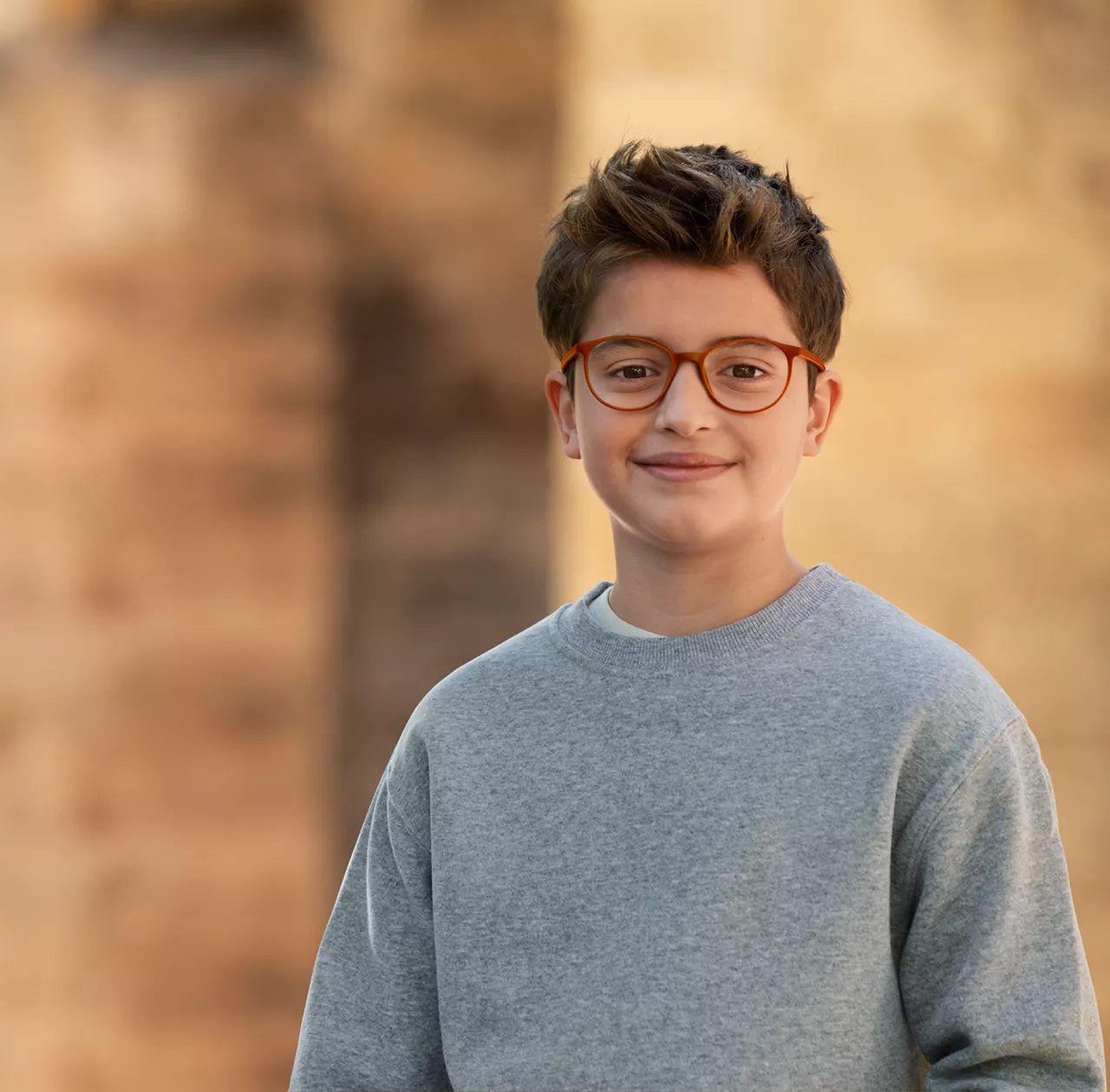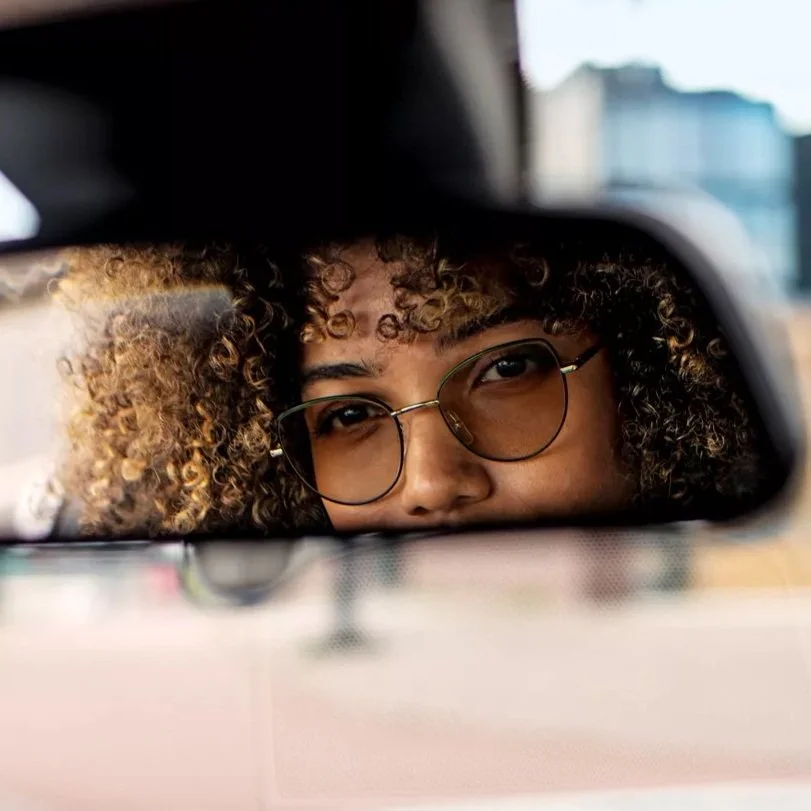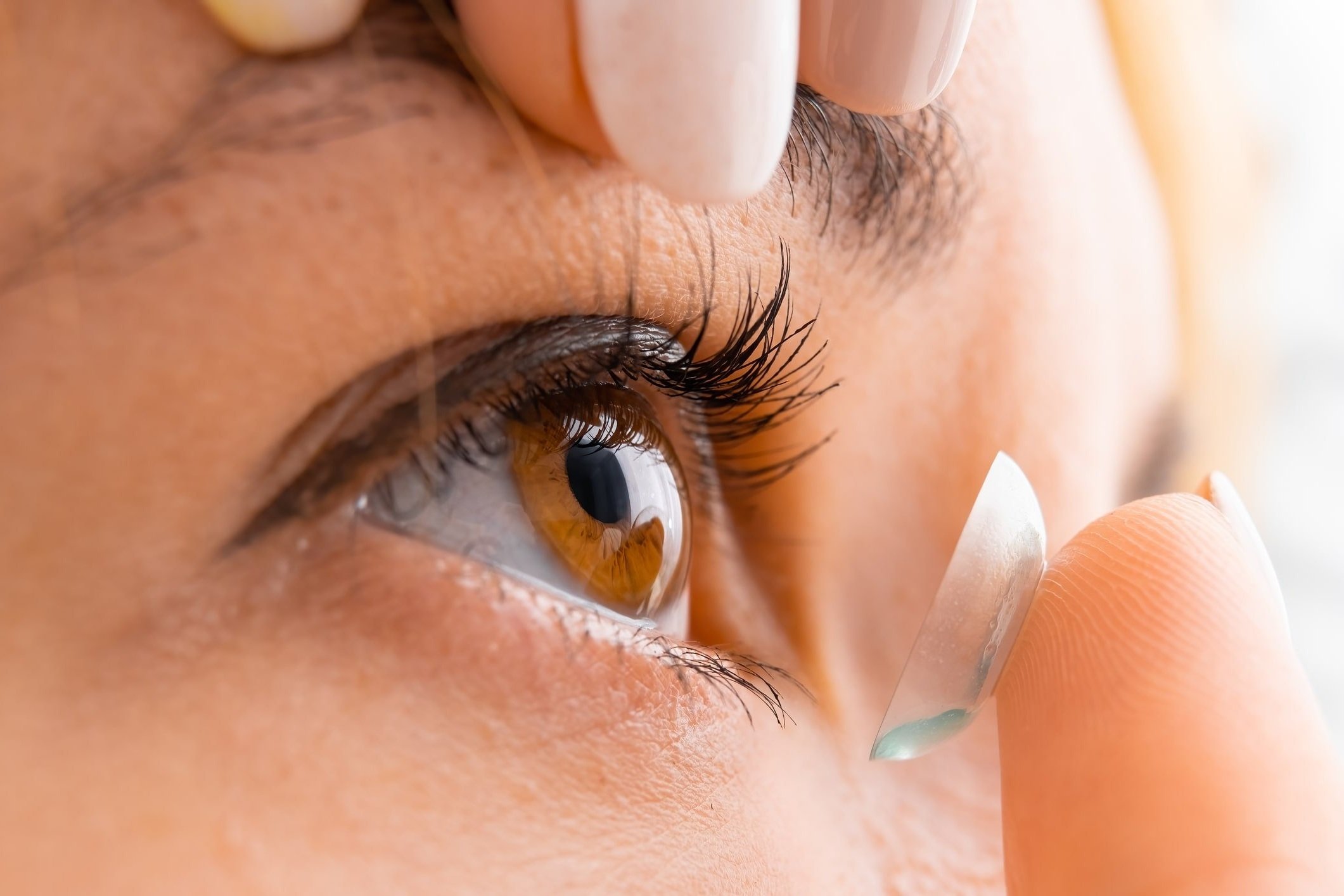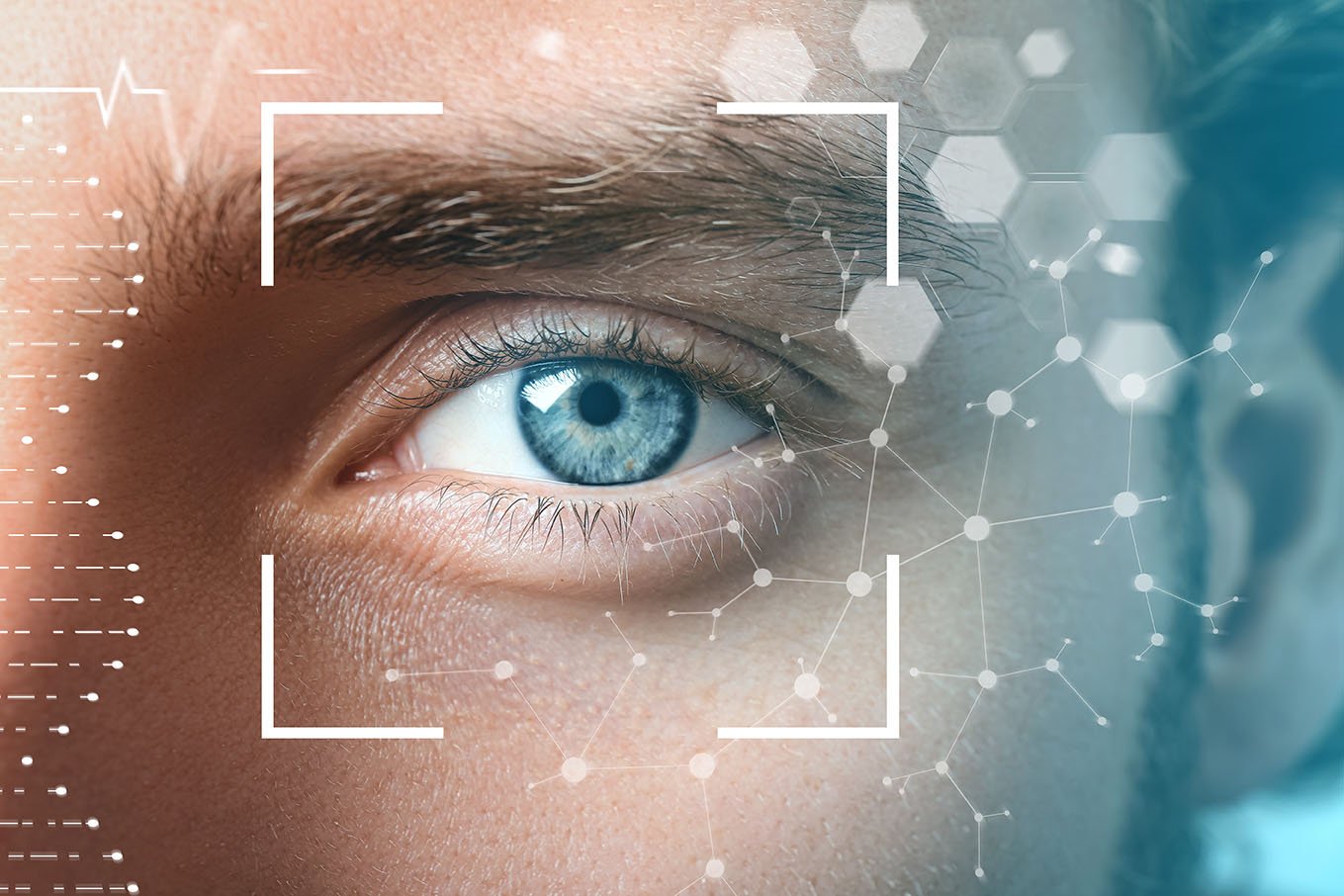
Myopia Management in children
What is myopia?
Myopia, which is also known as shortsightedness in medical terms, is a condition in which faraway objects appear blurry to individuals. Studies reveal that one out of every three people in the UK (1) is affected by myopia, and estimates suggest that about 50% of the world's population will develop this condition by the year 2050.
Myopia, or nearsightedness, can develop at any age, but it is especially worrisome when it starts in young children. This is because the eye is still growing during childhood, which can cause myopia to progress quickly. The earlier myopia starts, the more severe it can become and the greater the risk to eye health. A prescription with ‘0.00’ or ‘Plano’ means that no glasses are needed to improve vision. It's important to note that myopia measurements are always expressed as negative numbers in increments of -0.25 or less.
It's crucial to manage all myopic prescriptions in children, and Optometrists play a key role in advising on appropriate care based on the extent of short-sightedness. The classification of myopia includes:
Mild myopia: -0.25 to -3.00
Moderate myopia: -3.25 to -5.00 or -6.00
High myopia: greater than -5.00 or -6.00
Normal Vision: No spectacle Prescription, 0.00
Myopic Vision: Prescription, -0.25 and beyond
Unlike nearsightedness or myopia, which is a negative number, hyperopia or "longsightedness" is always a positive integer, starting from +0.25. Those who have hyperopia will see nearby objects as blurry, but distant objects will appear clearer.
What are the symptoms of myopia?
What should you look out for?
Sometimes, individuals may experience difficulty seeing distant objects clearly, such as having trouble reading street signs while driving or needing to squint while watching television. If you are facing such vision concerns, our team of Dispensing Opticians is available to help you choose the right glasses that suit your needs and address your vision issues effectively.
Myopia can develop in anyone, and since children may not be aware that their eyesight is not "normal," there are specific signs for adults to be mindful of. In infants, toddlers, and children, signs may include frequent eye rubbing, sitting too close to the TV, struggling to see the whiteboard at school, and complaining of headaches or eye strain.
Sometimes, myopia may progress without noticeable symptoms, underscoring the importance of regular check-ups with a local optician. We strongly advocate for parents to bring their children for eye examinations from an early age, ideally initiating the first eye test around age 3 or 4.
The progression of myopia is often most pronounced during growth, with changes in prescription naturally slowing down in the late teens to early twenties for the majority of myopic children.
Unlike children, adults do not develop myopia in the same manner, eliminating the need for myopia management in adults.
If there are any worries about an individual's or a child's eyesight, it is recommended to schedule an eye examination. Our Eye Examination is an excellent option, which includes ultra-widefield and 3D Retinal Photography as standard. This exam involves capturing a digital image of the back of the eye, which helps to provide personalized care and optimal advice.
What causes myopia?
Myopia, also known as nearsightedness, can be caused by a combination of genetics and lifestyle factors. While it typically develops during childhood, it can also occur in adults. Children who have a parent with myopia are more likely to develop the condition, but there are cases where there is no family history. Environmental factors and spending prolonged periods of time on near tasks, such as using electronic devices like smartphones, tablets and computers, can also contribute to the development of myopia.
Extended periods of high concentration, close-up tasks such as using smartphones, tablets, and computers, have been shown to increase myopic symptoms [2].
It is important to ensure that your children spend time playing outside and using computer screens safely. This can help to reduce their risk of developing shortsightedness. To achieve this, you can encourage them to follow the 20-20-20 rule, which involves taking a 20-second break every 20 minutes and looking at something that is at least 20 feet away. Additionally, it is essential to ensure that there is adequate lighting when they are doing high-concentration tasks, such as reading and writing.
-
The onset of myopia at an early age, guarantees a need for lifelong eyecare. Rising levels of myopia are connected with a number of serious eye problems and not just the need for glasses throughout life.
Unfortunately, myopia can also lead to eye conditions and complications:
Glaucoma – increased pressure inside the eyes
Retinal detachment – where the retina pulls away from the back surface of the eye
Myopic maculopathy - where vision fades away and can completely degenerate from the centre of your vision
At Arthur Hayes Opticians, we recommend an examination which includes retinal imaging for adults and children alike, allowing your optometrist to see a detailed picture of the back of your eye and check for early signs of conditions like glaucoma, retinal detachments and tears.
-
While there is no known cure for myopia, regular eye exams are crucial in monitoring your vision and overall eye health. Based on the results, we can give recommendations for the best eye care for you and your family. Our team has vast experience in managing myopia and can determine whether your child is a suitable candidate for treatment. Each child is unique, and we tailor our treatments to fit both the child's needs and the type of correction required.
There are a number of products available to manage myopia. We have included a few options, below, for you to explore. Your local eyecare team will advise on the best products for your child.
-
There are several options for soft contact lenses that can be used for managing myopia. One of the most frequently recommended options is MiSight® by CooperVision. These lenses are designed to be worn daily, and are disposable, so they only need to be used once. They are specifically designed to slow down the progression of myopia in children. To get the best results, the lenses should be worn for at least six days per week.
Studies have suggested that the MiSight® one-day disposable lens has been proven to slow down myopia by up to 59% [3]. This means that if fitted early enough with this lens, most children will end up with less than half the strength of myopia than if fitted with a conventional contact lens or spectacles.
Soft contact lenses including MiSight® for myopia management are available at Arthur Hayes Opticians.
-
We are proud to offer MiYOSMART lenses from HOYA. This ground-breaking technology works to help children manage and slow the progression of myopia.
MiYOSMART is an innovative spectacle lens for myopia management. Based on a two-year clinical trial result, MiYOSMART is proven to curb myopia progression in children on average by 60% [4] with its award-winning D.I.M.S. (Defocus Incorporated Multiple Segments) technology.
We know that kids will be kids, these HOYA lenses are made with light, thin and impact-resistant material, safest for even the most active of kids, and have a UV coating to protect eyes from blue light (from screens to low level sunlight).
Our team will be able to guide you on how best to use these lenses with your child: spending more time outside, wearing them as much as possible (especially for high concentration tasks such as homework) and getting regular check ups with us.
-
Even with myopia management, your child may need a stronger prescription as they continue to grow so we recommend regular visits to your optician and keeping up to date with their latest prescription. Always take your Optometrist’s advice when it comes to corrective lenses as they will be able to offer you bespoke advice on a case by case basis. OrthoK lenses must be worn every night and myopia managing contact lenses (or glasses) must be worn everyday in order to achieve the best results. Talk to your optometrist to determine whether contact lenses, glasses, or perhaps a mixture of the two options is best for your child.It's important to understand that even with myopia management, your child's prescription may still change as they continue to grow. We highly recommend that you visit your optician regularly and keep an up-to-date record of their latest prescription. Your optometrist will be able to offer bespoke advice on corrective lenses based on your child's specific needs, so it's essential to follow their recommendations. For myopia-managing contact lenses or glasses, they must wear them every day to achieve the best results. It's crucial to talk to your optometrist to determine which option is best for your child - whether it's contact lenses, glasses, or a combination of both.
Relation between Near Work and Myopia Progression in Student Population. Mater Sociomed, 2014: https://www.ncbi.nlm.nih.gov/pmc/articles/PMC4035135/
Clinical trial, A 3-year Randomized Clinical Trial of MiSight Lenses for Myopia Control, Chamberlain, 2019
Myopia progression (SER) by 59% and axial elongation (AL) decreased by 60% compared with those wearing SV lenses.
Understanding short sightedness (Myopia) in children.
Our optical products













